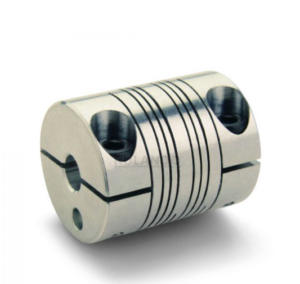 Often confused with backlash, windup is easy to overlook when selecting couplings for a motion system. But windup is an important consideration that can cause real problems if not factored-in early in the design process. Bobby Watkins of Ruland Manufacturing gives us a few reminders for thinking about windup in during your selection process.
Often confused with backlash, windup is easy to overlook when selecting couplings for a motion system. But windup is an important consideration that can cause real problems if not factored-in early in the design process. Bobby Watkins of Ruland Manufacturing gives us a few reminders for thinking about windup in during your selection process.
“Windup — often confused with backlash — are not the same. Windup is dampening. It’s dampening or cushioning, think of it that way. It’s not error in the coupling. It’s not slop. A jaw coupling provides a perfect example of windup: The spider compresses, and rebounds and it absorbs shock at dampens — that’s wind up, not error. Some couplings have different amounts of wind up. A bellows coupling or disc coupling, for example, have little windup. They’re highly torsional stiff. Rigid couplings have almost no windup. Windup is a good thing to have in your coupling design. Especially for application where you’re expecting frequent shock loads and your’re using a jaw coupling, for example. Windup is your friend at that point in the jaw coupling.
In one example, an Inspection OEM selected a four beam to move an eye over short increments. The four beam coupling was not stiff enough to accommodate the short movement and the positioning was slightly off. In another example I came across, there was an application of a beam coupling where it was exceeding its torque capacity because of an incorrect beam coupling selection and it was winding and unwinding, and that was causing a positioning error. Again, in that application, changing to a stiff design coupling, a disc coupling, a bellows coupling would have been the better choice. Paying attention to windup early on pays dividends down the line.
Ruland
ruland.com
Leave a Reply